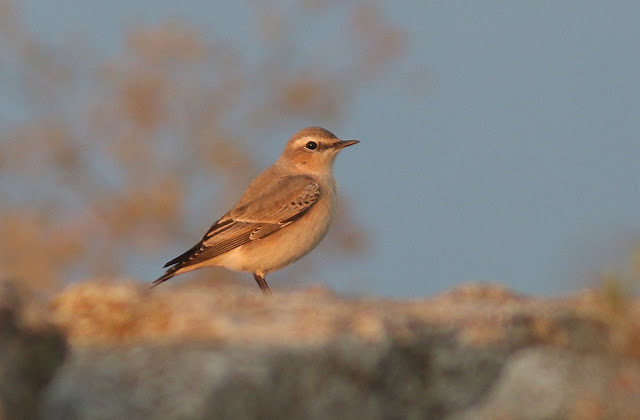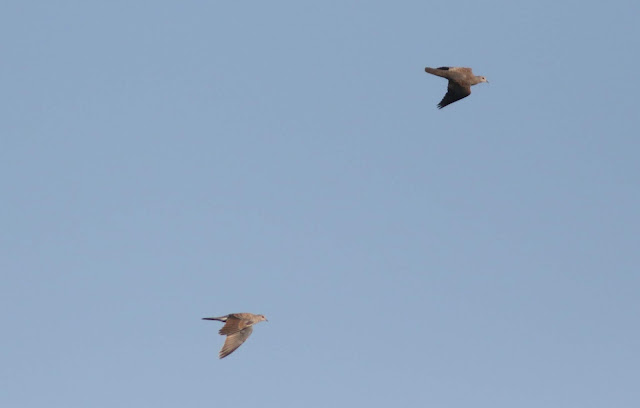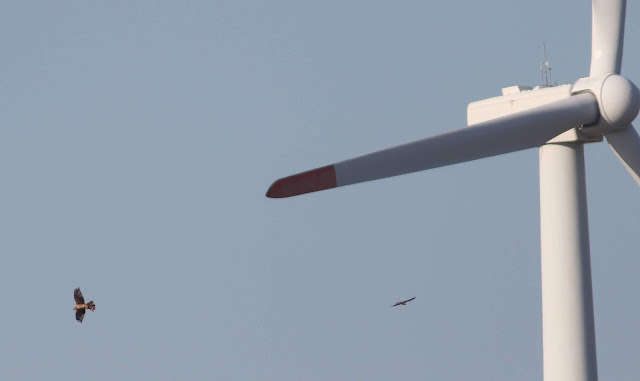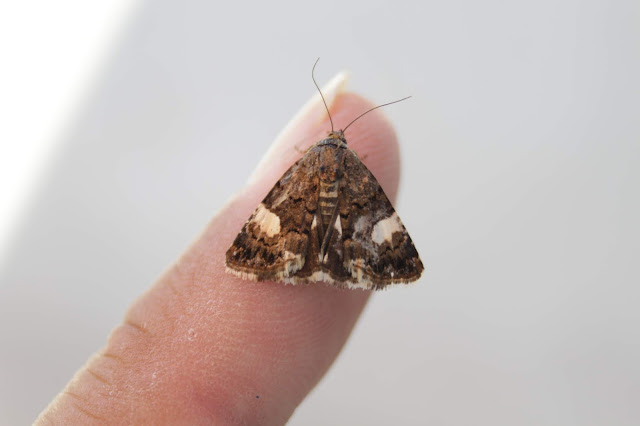Clear skies again with a north-east wind. I started the day off at Cape Kaliakra (Ebird list
HERE), then I went with the family and had lunch there before driving to Shabla and then spent the evening local to the guest house (Ebird list
HERE).
There were migrants everywhere again. The 20 mile drive to Shabla revealed Bee-eater flocks, the odd Roller, a couple of Montagu's Harriers, Common Buzzards and Lesser Grey Shrikes and other migrants all the way along the coastline. The total number of birds in this region must be enormous.
Highlight of the day were the Pied Wheatears at Cape Kaliakra, Alpine Swifts at head height over the cliffs, Red-backed Shrikes literally everywhere, 45 Golden Orioles coming into roost again in the Pine avenue along the main road, a dusk movement of Yellow Wagtails and simply the good number of migrants at the Cape including Black-headed Bunting, Red-breasted Flycatchers and flocks of Bee-eaters overhead.
I've got the moth trap and the sound recorder on tonight at the guesthouse so should be interesting what they pick up over night.
I'm going for an adult male winter Pied Wheatear on this one. The black on scapulars and mantle is extensive , there is black in the crown and the throat patch is extensive too.
This adult winter male looked more like an Eastern Black-eared Wheatear but in less contrasting light there was extensive dark centres to the mantle and scapulars so I'm going for another Pied but happy to be corrected
Presumed first-winter male Pied Wheatear
Presumed first-winter female Pied Wheatear
Presumed first-winter male Pied Wheatear
Alpine Swifts (above and below). Moulting the outer primaries with inners already replaced- a state of moult that we noticed on Alpine Swifts in Uganda recently. Presumably the Uganda birds were either first-summers that didn't migrate, non-breeding adults or part of a resident population.
Tawny Pipit and first-winter Black-headed Bunting (right and below)
A cracking male Red-backed Shrike.
A very juvenile, juvenile Red-backed Shrike
This shrike stood out as being rather uniform brown and aroused my hopes for a Brown Shrike- however it looks like there is some grey on the nape, the underparts are rather white and there's no sign of a graduated tail. The primaries also look quite long compared to the tertials. Presumably just an adult female Red-backed Shrike but a rather dark and uniform one.
Adult female Montagu's Harrier
Sand Martin and Swallows, classic autumn migration sight
A couple of classics, Hoopoe (above) and Bee-eater (juvenile below)
Cape Kaliakra





























































